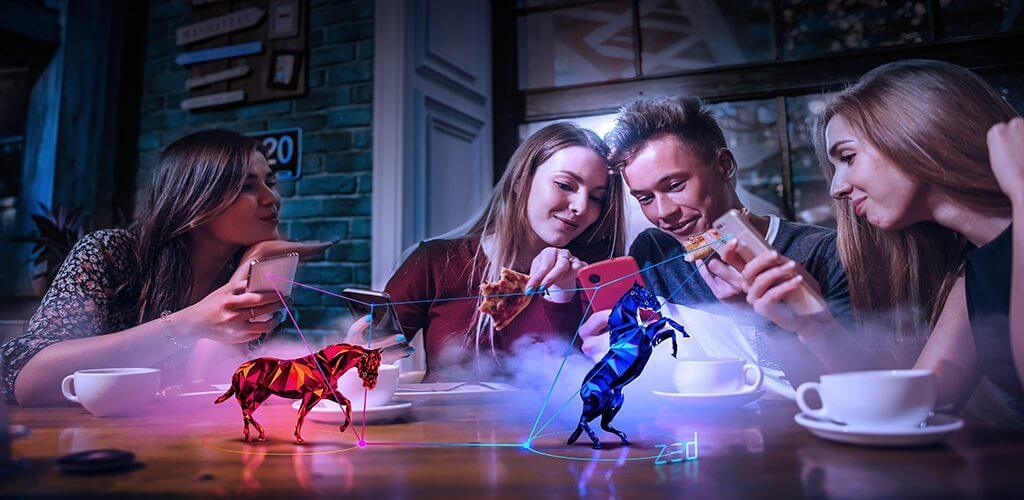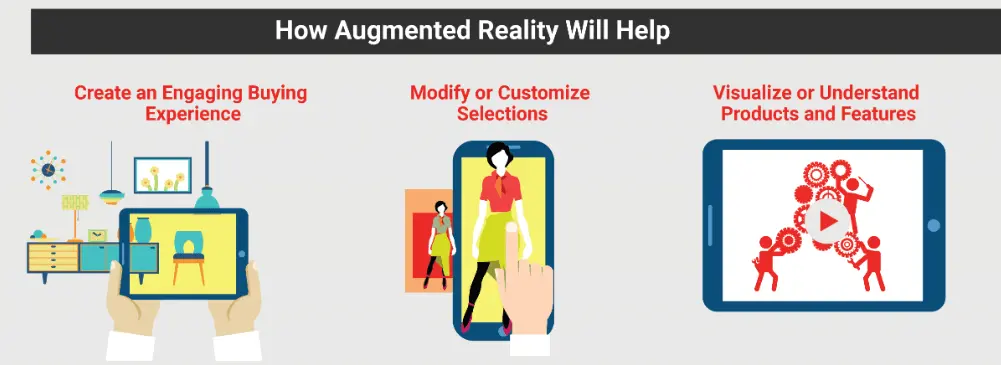Comments
- No comments found

Combining augmented reality (AR) and non-fungible tokens (NFTs) is a game changer.
Can these two exciting technologies work together in the long run? Let’s find out.
Unique collecting has hit the digital market. NFTs are one of the hottest trends on the internet right now. Everyone is talking about them. Most likely because certain NFTs are selling at auction recently for hundreds of thousands of dollars. These sales can be exciting, but they can also be confusing.
One logical question is, can Augmented Reality be used with the new hot trend of the NFT to create a new online collecting experience? It’s a good question and one that bears examining further.

Source: Touchstone Research
Augmented reality is an interactive experience of a real-world environment where the objects that reside in the real world are enhanced by computer-generated perceptual information, sometimes across multiple sensory modalities, including visual, auditory, haptic, somatosensory and olfactory.
A non-fungible token is a unit of data stored on a digital ledger, called a blockchain, that certifies a digital asset to be unique and therefore not interchangeable.
In order to understand NFT, you first have to know what fungible means. Fungible is a good that can be replaced by another identical good or a commodity of equal value. For example, a gold bar is fungible for another gold bar of the same weight and purity. It is also fungible for a more significant amount of silver.
Non-Fungible means that the item is unique and can’t be traded for precisely the same value. Examples would be items like original artwork, game-used sports gear, and autographed memorabilia. These are one-of-a-kind items you don’t see everywhere.
Non-Fungible Tokens are a piece of code in a blockchain overlaid or applied to a specific image, program, or code. The information is stored in a database that says that you own the item.
These can be placed on works of art, unique items or characters in games, and almost every other kind of digital thing you can imagine. Having an NFT is the equivalent of getting an original piece of art as opposed to a print.
You can purchase Starry Night’s print for 2 dollars on amazon, but the original is a priceless piece of art. NFT denotes the digital difference between a print and a unique collectible online.

Source: UX Collective
Games offer many bundles and packages to buy characters, items, armor, and boosts. People spend thousands of dollars a year purchasing these items to make their games better. Right now, there is no limit on how many people can have the same item.
For example, if you play the AR game Pokemon Go, rare Pokemon are hard to get. You can spend money on specific items and boosts. Tomorrow there could be an update to the game that makes your prized Shiny Party Hat Nidorino as common as a Pidgey.
If Pokeman started adding Augmented Reality NFT, you could have a unique Pokemon that is only yours. It would be your Pokemon, and another just like it could never exist. Sure there may be others that looked like it, but it wouldn’t be the same character.
AR can start doing this with many features. Soon your characters and every character in the game could have specialized armor, gear, and decorations that make your gameplay individualized for you.
There are probably some people reading the description of Augmented Reality NFT and thinking that no one would pay a premium for this. What they aren’t taking into account is the collectors’ mentality.
Contemporary artist Krista Kim recently sold an NFT-minted digital house for 288 ether, valued at over $500,000 based on the cryptocurrency’s trading price.

Mars House AR NFT
The creation — called Mars House — is part of Kim’s grand vision for the role augmented reality will play in the world, she explained in an interview on CNBC’s “Squawk Alley.”

Watch the full video interview with Krista Kim here.
Recently Tom Brady’s rookie card sold for over a million dollars. Cards, comics, action figures, and other collectibles are mass-produced. People want the original, not a reprint or copy. Collectibles are made on plastic or paper stock that are cheap, yet a person will spend millions for the correct item at the right time. Why?
People want to own what they consider a unique item. Until NFTs, there was no guarantee about the rarity of a unique digital item. That still didn’t stop people from spending big bucks on video games to get rare pieces.
If you can guarantee that a specific item will always be unique, some collectors will go all-in on finding these pieces to add to their collection.
There can be a downside to the uniqueness, though. If people feel like it is too expensive or too difficult to start or complete a collection, there is a chance that they will just walk away. It doesn’t happen often but it has hurt specific collecting markets for Playmates Star Trek action figures.
To avoid this, companies will have to find a balance between unique collectible items and availability to the general public. There are already things like Semi-Fungible tokens being used to create this balance between desirability and availability.
AR has been steadily growing since it was first introduced. What started as a fun idea has become one of the fastest-growing markets in technology. Players are just now getting used to an AR experience for many of their games.
In these games, your characters can choose skins and emotes created by a community of AR enthusiasts. Right now, everyone gains access to the same costumes and skins with relative ease.
With Augmented Reality and NFT certified uniqueness, people will have fun and spend a lot to get their favourite character, weapon, or outfit. As these become more accessible through systems like the Oculus and other AR-specific gaming options, you could see AR NFT collecting take-off.
As the AR gets better, people will feel an even closer connection to their digital collection. Over time, there may be ways to add NFTs to all items and characters in AR to make them feel unique and connected to players.
NFTs aren’t going anywhere soon. As they become more popular, you will see more and more artists, companies, games, and AR games using them. People love unique items, and they love collecting them. Even just the appearance of rarity can make people want an item.
A guarantee of rarity may be a huge financial opportunity for AR developers and creators. Turning specific skins, armours, and items into personalized and unique pieces may lead to more interaction with the AR games.
Leave your comments
Post comment as a guest